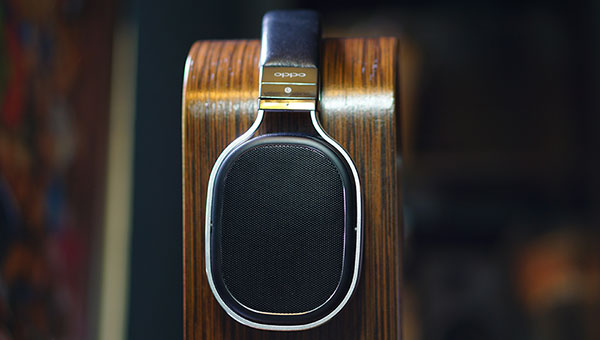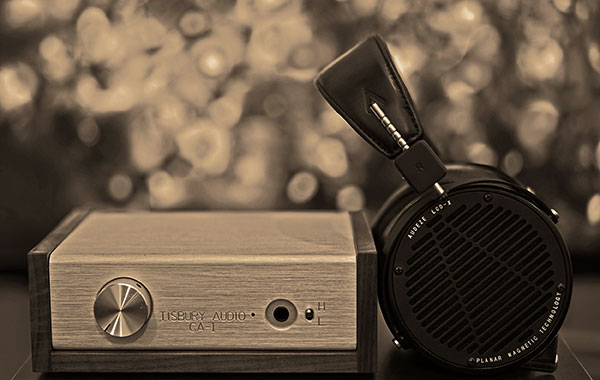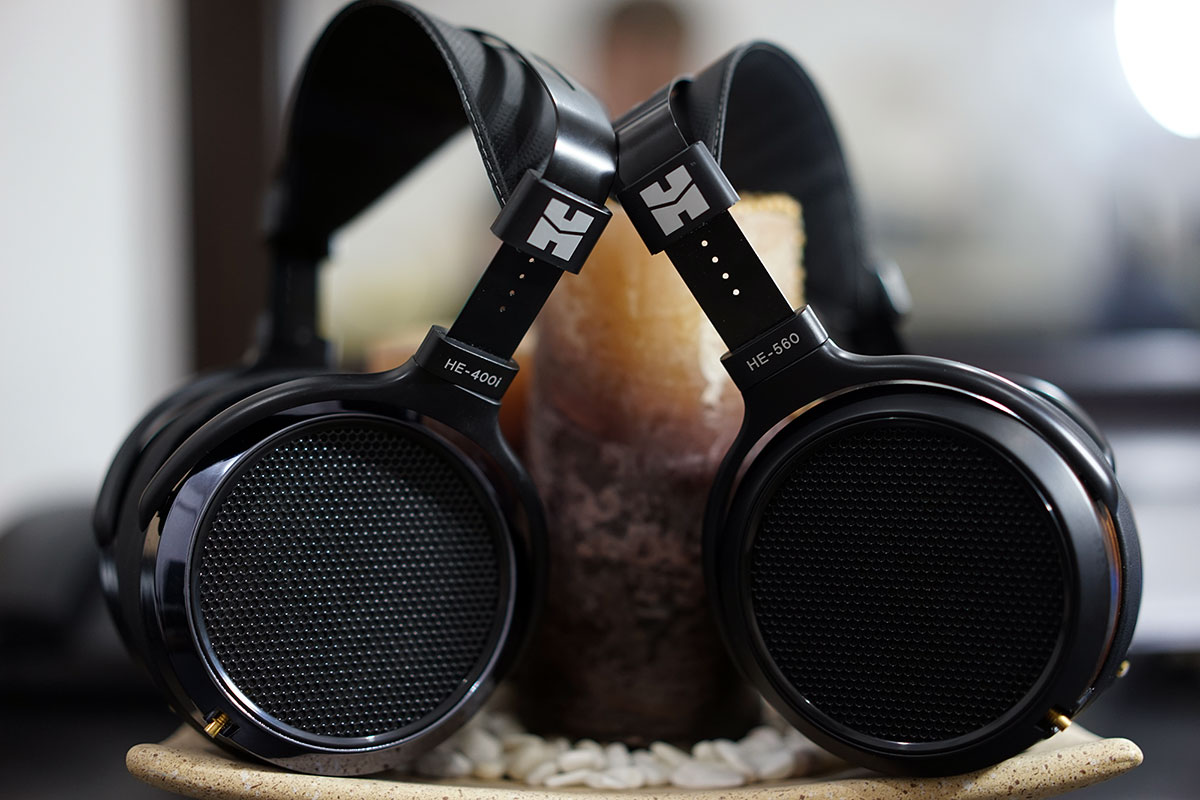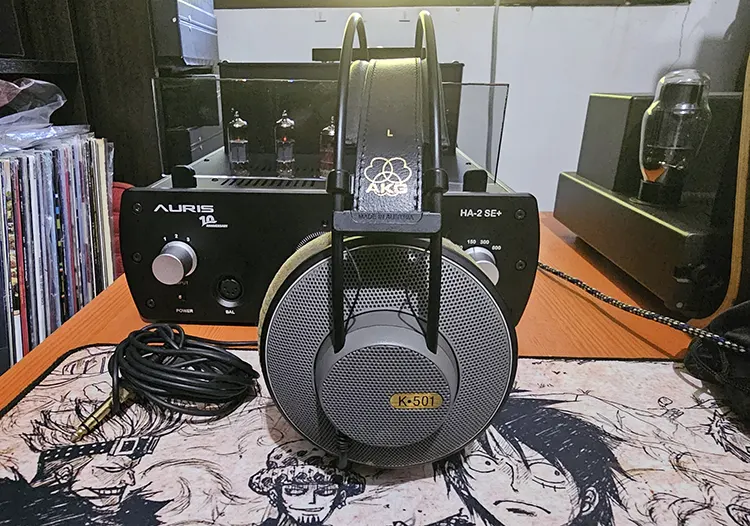Sound Impressions
When speaking earlier with Wes about how he went about referencing and tuning this amp he mentioned the Challenge Amp 1 was specifically tuned with the Sennheiser HD 650, HiFiMan HE-500, and the Shure 215. Now that is quite a range of varying demands from an amp – one dynamic, one planer, and one 20ΩIEM.
I would have liked to have seen the Challenge Amp 1 pushed with say an HD800 or an LCD-3 just to see how far they can go but I guess that is my job in the end as a reviewer and you the demanding public.
The 3 chosen helped me understand how the tuning ended up and how some reviewers have already stated why they prefer say one headphone over another.
Sennheiser HD 650
The HD 650 has an inherently thick and rich tonality with a slight upper veil that a lot of people choose as their mid-fi can of choice for rock and similar genres. It requires a bit of power to get the best out of them but nowhere near as much as the HE-500.
HIFIMAN Headphones
The HE-500’s is slightly warmer and more laid than its more energetic flagship cousin, the HE6. Until the release of the HE560, the HE-500 was seen as the sweet spot in the Hifiman Range for audiophile bliss without the need for a huge power amp.
The Shure 215 was a more interesting choice at 20Ω and probably not a reference IEM for me for such a nice amp. I would have gone a touch higher in referencing with the Westone W4r or perhaps a UE900s or IE800.
It just seems to be a more natural fit for the perceived customer of the Challenge Amp 1. Still, the use of an IEM in tuning does go some way to show what was on the mind of Tisbury when producing the Challenge Amp 1 and that is all about flexibility.
Timbre
The resulting tonality is incredibly clean, fast, articulate, and detailed. It feels like the Challenge Amp 1 is tuned to eradicate the perceived flaws in the veil of the HD650 and take advantage of the naturally engaging timbre of the HE500.
Even when paired with my dynamic and bombastic ‘Made in England’ shoebox DAC, the Just Audio uDAC2496, it did little to change the aural perception that this sparkling yet slightly thin-sounding amp was purposefully made for genres of a more sensible and courteous nature.
Genres high in fidelity with a deliberate reach for discerning listeners who ache for accuracy and detail sans sterility will flower and prosper. Genres knee deep in the mosh-pit gnashing away for thick basement dwelling chord crunching slams could decidedly flounder.
Yet in all this, it would be a fallacy to assume the Challenge Amp 1 is all nut cutlets and no beef steak. There is no lack of musicality with its fast-paced attack, quality bass extension, and texture.
It is more of a case that the Challenge Amp 1 feels just a little stand-offish, prim, and proper when something a little low-slung, rich, and wild is required. There are audiences for both so this is not a weakness but rather more of a considered but firm choice.
It is all too easy to stereotype this amp as one for the classics, the jazz, and the usual array of emo-like acoustics and simply discount it as one-dimensional.
That would be selling the Challenge Amp 1 well short of what it can do. With its almost ethereal treble and a firm laser-like focus on vocals and the midrange, it is a beautiful and engaging amplifier with some lesser-known modern shoegazing or ambient rock titans such as Hammock and especially with madrigal vocal magicians, Miranda Sex Garden (MSG).
AKG K501
The Challenge Amp 1 with the AKG K501’s lush and natural midsection is a match made in heaven for the wonderful intricate vocal performances on MSG’s seminal Madra album from 1991. Not a hair out of place, astonishingly low noise levels, great black background, and just out-of-this-world accuracy.
This was exactly what I was thinking of when I stated “Flower and prosper”. Throw just about any layered vocal-centric performance at the Challenge Amp 1 and you will get the same wonderfully airy response.
Mediaeval Baebes, Sarah Brightman, Enya, and Anna Coddington – the list just went on and on of superb female vocals taking front and center and excelling with the CA-1.
Loved the vocal and mids performance with the K501 but I was also very curious, given the wide range of reference tuning headphones used, just how well the Challenge Amp 1 would perform on highly efficient cans and IEMs.
There is a plethora of comments praising the performance of the Challenge Amp 1 with the HE-500 as well as observations on the Audezes and Senns HD range already floating around on the “interwebs’ so let’s go left of center a bit and try some other cans.
Sony MA900
The Sony MA900 is a budget-fi favorite of mine, and something perhaps a little similar in presentation to the K501 but a few notches lower and critically a very low impedance headphone at 16Ω. It also suffers from notable distortion on some amps if driven too hard or the impedance is far too high.
Well the MA900 was equally at home with the Challenge Amp 1 on a low gain setting with almost identical levels of performance as the K550 on the mids but with a slightly smaller soundstage and not quite the same level of resolution.
It sounded positively lush and flowing with the CA-1 with tracks like Camera Obscura’s “Lloyd I am ready to be Heartbroken” sounding majestic without ever being forced or too brittle. Goodness, this amp is helping to discover just about every discarded alternative track I have in my possession from the last 20 years!
Unique Melody Merlin
Technically the Challenge Amp 1 handled the 12Ω Merlin well in terms of power, zero buzz, and a really low noise floor but tonally this is a different kettle of fish to the K501 and the MA900 with a much thicker and deeper sound and a laid back mid and treble section.
The Merlin’s darker tuning still couldn’t disguise the CA-1 prominent vocal stage but this match suited more husky jagged vocals such as Florence and the Machines and Ida Maria then sweeping angelic type madrigal type singing from MSG.
It is as close to rocking out as I got with my headphones and cans of choice with the CA-1. It just didn’t soar as I hoped it would.
Ultrasone Edtion 8 (Twag v2 recabled)
If ever there is a dichotomy of design intention then a 32ohm Ed8 sitting on the Challenge Amp 1 is it. The Edition 8 is modernity at its shiniest and possibly the most expensive and polarizing portable headphones in recent history.
Remember only 2 digits higher and you have the infamous Tyll “Cheese Grating – ear aching” YouTube review of the ED10 so we are reaching mischievously deep here.
(60 minutes later). I regretted the last 60 minutes of my life. The Challenge Amp 1 and the Ed8 are some of the weirdest matches I have ever heard. It sounded thin, sharp, and lacking in any bass.
I know the ED8 can do better than this (honest) and I know the Challenge Amp 1 can perform leaps and bounds better than this. Best to keep these two as far apart as possible, maybe in separate rooms or different dimensions.

Oppo PM-1
This had quite the opposite effect from the Ed8. I loved this combination. Just the right amount of bass response without it being overwhelming and plenty of texture and detail to boot.
The PM-1‘s smooth and welcoming yet spacious and detailed tonality just clicks with an already airy and detailed Challenge Amp 1. Nothing is overplayed and everything feels wonderfully natural.
I could listen to this match with EDM and rock all night without an iota of fatigue also which is a bonus. It is not the fastest of headphones but that lush midrange combined with the lusty late-night vocals of Diana Krall are just perfect for my tastes.
Beyerdynamic DT1350
Continuing my testing with a somewhat left-of-center range of cans, the DT1350 is a little higher up in the ohm scale at 80ohms but still essentially a fairly easy-to-drive headphone.
I remember this headphone a long time ago as having a slightly dry or unique midrange but with very little low-end distortion, excellent slam, and a distinct lack of top-end harshness.
I essentially switched from the PM-1 to the DT1350 in ‘mid-Diana Krall’ and whilst there was a slightly higher level of dryness and sibilance and not quite the lush presentation the PM-1 offered, the DT1350 certainly sounded a lot better than I remembered when paired with the Challenge Amp 1.
I would still give the edge to the more natural and richer tonality of the PM-1 though but the DT1350 kicks a bit more in the lower end than the MA900 and has more clarity and aggression in the mids and treble than the Merlin.
Shure SRH1540
Again not the norm de jour but a nicely put-together mid-fi headphone that received relatively positive reviews for an above-average sense of space and headroom in a very musical closed can package.
With a sexy look and comfort fit for a king it’s one of my favorite casual listens on any given wet and dreary weekend.
Sadly not quite the match made in heaven for those floundering genres I spoke of before with a little too much energy in the lower treble for my liking but unlike the DT1350, the SH1540 suffered little if any sibilance in vocals and had a bit more slam and depth than the MA900.
The main problem I found with the Challenge Amp 1/1540 match was that U shaped signature just didn’t gel with the mid and vocal focus of the Challenge Amp 1.
The 1540 requires something a bit richer and more planted to make it sing though the airy presentation of the CA-1 does help to make this one of the more “open” closed headphones I have used.

Dita – The Answer (The Truth Edition) IEM
I only got these through the door yesterday so I have had very little time to benchmark them.
These single dynamic driver units are rated at 16Ω with 102 dB, terminated with Van Den Hul cables, and costing around $1000 so I thought stylistically and tonally this might be just the ticket with the Challenge Amp 1 on paper.
And I was right, well almost. These are simply superb earphones matched with the Challenge Amp 1. Smooth, full-bodied, and natural-sounding earphones combined with the Challenge Amp 1 excellent mids and vocals performance are a win for me.
Driving on low gain the Challenge Amp 1 pot can go to around 10 am on the dial before getting a bit too loud but that is decent control for a desktop amp.
The Answer is still not the ‘answer’ to hard rock and the Challenge Amp 1. The Challenge Amp 1 is relatively stubborn in that respect but matched with something like Damian Rice’s “Elephant” it is searing with emotional detail in the vocal staging and possesses a drop-dead super black background with a massive yet accurate sound stage.
The Truth’s slightly elevated bass adds some much-needed lower frequency weight when needed but is never as domineering as say the UM Merlin’s.
It’s also a bit cleaner and more forward in the mids and treble than the Merlin when used with the Challenge Amp 1. When I mentioned vocals I do think on this occasion I preferred male vocal reproduction over female vocals which tended to show a tiny bit of harshness now and then depending on the recording.
My Verdict
If you are after a smooth effortless vocal-centric performance with good low-end extension but want to avoid tiring dynamics and heavy-handed slam then the Challenge Amp 1 could be the right kind of classy addition to your system.
It is tremendously versatile with IEMs and headphones alike playing comfortably with just about most things I threw at it.
Can you just justify £349 for what is in essence “just” a headphone amplifier when all else in front of it, particularly coming out of Asia, is sporting just about every known button and widget in tow?
Tough question, wish I never asked it myself since it sits beside the Oppo HA-1 (the Swiss army knife of amping). If sound quality is your main deciding factor and you just adore jazz, acoustics, and vocal performances then I think the Challenge Amp 1 is money well spent.
Tisbury Audio knew who they were making this amplifier for. It is a retro-looking piece of kit but it is every bit as modern sounding as the next GUI-interfaced black amp you will see in the rack beside it and probably a good bit more versatile to boot.
Tisbury Audio Challenge Amp 1 Technical Specifications
- ‘Reference grade’ fidelity into almost all headphones
- Solid American black walnut and 3mm aluminum enclosure
- Two gain settings: 6 dB (2x) and 16 dB (6.3x)
- High output power: 1 W into 50 ohms
- Vanishingly low distortion: 0.0003% (1 kHz, +6 dBu into 32 ohms)
- Very low noise floor: -110 dBV and 128 dB dynamic range (A-weighted)
- Flat frequency response: -0.04 dB from 20 Hz to 20 kHz
- Muting relay for safe and silent operation
- Compact footprint: W 204mm x D 170mm x H 74mm
- Top-quality components: Alps “Blue Velvet” volume, Neutrik jack, Panasonic caps, Susumi 0.1% thin film resistors







